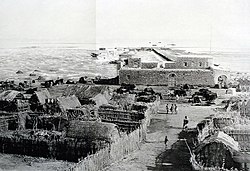
The history of Islam concerns the political, social, economic, military, and cultural developments of the Islamic civilization. Most historians believe that Islam originated with Muhammad's mission in Mecca and Medina at the start of the 7th century CE, although Muslims regard this time as a return to the original faith passed down by the Abrahamic prophets, such as Adam, Noah, Abraham, Moses, David, Solomon, and Jesus, with the submission (Islām) to the will of God.
Somalia, officially the Federal Republic of Somalia and formerly known as the Somali Democratic Republic, is a country located in the Horn of Africa. The country was an important centre for commerce with the rest of the ancient world, and according to most scholars, it is among the most probable locations of the fabled ancient Land of Punt. During the Middle Ages, several powerful Somali states and port towns dominated the regional trade, the Mogadishu Sultanate and Ajuran Sultanate both centered around the port town Mogadishu, but also the port towns of Barawe and Merca.

The Adal Sultanate also known as the Adal Empire, or Bar Saʿad dīn was a medieval Sunni Muslim Empire which was located in the Horn of Africa. It was founded by Sabr ad-Din III on the Harar plateau in Adal after the fall of the Sultanate of Ifat. The kingdom flourished c. 1415 to 1577. At its height, the polity under Sultan Badlay controlled the territory stretching from Cape Guardafui in Somalia to the port city of Suakin in Sudan. The Adal Empire maintained a robust commercial and political relationship with the Ottoman Empire. Sultanate of Adal was alternatively known as the federation of Zeila.
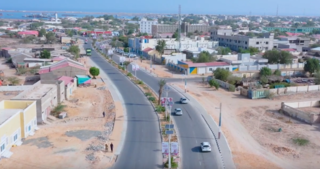
Berbera is the capital of the Sahil region of Somaliland and is the main sea port of the country, located approximately 160 km from the national capital, Hargeisa. Berbera is a coastal city and was the former capital of the British Somaliland protectorate before Hargeisa. It also served as a major port of the Ifat, Adal and Isaaq sultanates from the 13th to 19th centuries.
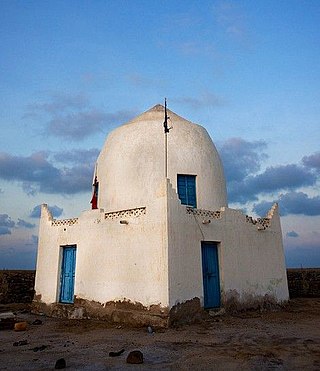
Zeila, also known as Zaila or Zayla, is a historical port town in the western Awdal region of Somaliland.

Ottoman Egypt was an administrative division of the Ottoman Empire after the conquest of Mamluk Egypt by the Ottomans in 1517. The Ottomans administered Egypt as a province (eyalet) of their empire. It remained formally an Ottoman province until 1914, though in practice it became increasingly autonomous during the 19th century and was under de facto British control from 1882.

The Sultanate of Ifat, known as Wafāt or Awfāt in Arabic texts, or the Kingdom of Zeila was a medieval Sunni Muslim state in the eastern regions of the Horn of Africa between the late 13th century and early 15th century. It was formed in present-day Ethiopia around eastern Shewa in Ifat. Led by the Walashma dynasty, the polity stretched from Zequalla to the port city of Zeila. The kingdom ruled over parts of what are now Ethiopia, Djibouti and Somaliland.
The Walashma dynasty was a medieval Muslim dynasty of the Horn of Africa founded in Ifat. Founded in the 13th century, it governed the Ifat and Adal Sultanates in what are present-day Somaliland, Somalia, Djibouti, Eritrea and eastern Ethiopia.

The history of Somaliland, a country in the eastern Horn of Africa bordered by the Gulf of Aden, and the East African land mass, begins with human habitation tens of thousands of years ago. It includes the civilizations of Punt, the Ottomans, and colonial influences from Europe and the Middle East.

Habesh Eyalet was an Ottoman eyalet. It was also known as the Eyalet of Jeddah and Habesh, as Jeddah was its chief town, and Habesh and Hejaz. It extended on the areas of coastal Hejaz and Northeast Africa that border the Red Sea basin. On the Northeast Africa littoral, the eyalet comprised Suakin and their hinterlands.

Tushpa was the 9th-century BC capital of Urartu, later becoming known as Van which is derived from Biainili, the native name of Urartu. The ancient ruins are located just west of Van and east of Lake Van in the Van Province of Turkey. In 2016 it was inscribed in the Tentative list of World Heritage Sites in Turkey.

The Somaliland Campaign, also called the Anglo-Somali War or the Dervish War, was a series of military expeditions that took place between 1900 and 1920 in modern-day Somalia. The British were assisted in their offensives by the Ethiopian Empire and the Kingdom of Italy.

Maritime history of Somalia refers to the seafaring tradition of the Somali people. It includes various stages of Somali navigational technology, shipbuilding and design, as well as the history of the Somali port cities. It also covers the historical sea routes taken by Somali sailors which sustained the commercial enterprises of the historical Somali kingdoms and empires, in addition to the contemporary maritime culture of Somalia.
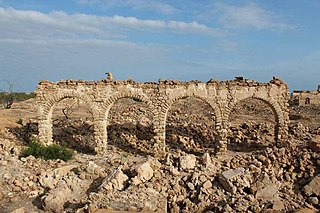
Bulhar is a historic port town in the Sahil region of Somaliland with routes dating back to antiquity. The port was rejuvenated in the 19th century and was a rival to nearby Berbera.
Sharmarke Ali Saleh was a leading 19th century Somaliland leader, captain, and merchant. He was known as "The African Rothschild " which indicates he was one of the richest man in Africa at that time and also the 'Political Boss of the Somaliland coast', a title which is a testament to his political influence in the region. He was the governor and ruler of Zeila and Berbera between 1841 and 1861, and for a time was known as the richest man along the Somaliland coast. His descendants would go on to become the traditional leaders of the Musa Arreh sub-clan of the Habr Yunis clan.

Siyara was a historic coastal settlement and fort located in the Sahil region of Somaliland. It served as the first capital of the Adal Sultanate following the Muslim resurgence spearheaded by Sabr ad-Din II.

The Isaaq Sultanate was a Somali Arab kingdom that ruled parts of the Horn of Africa during the 18th and 19th centuries. It spanned the territories of the Isaaq clan in modern-day Somaliland The sultanate was governed by the Rer Guled branch of the Garhajis clan and is the pre-colonial predecessor to the modern Republic of Somaliland.
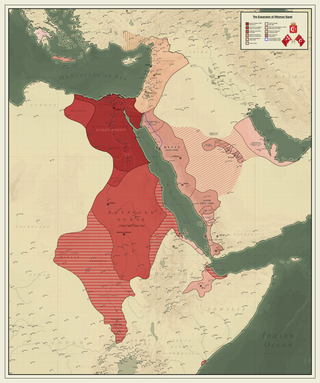
The Egyptian invasion of the Eastern Horn of Africa namely Hararghe and western Somaliland was part of a conflict between the Sultan of Aussa, Oromo, Somali tribesmen, and the Khedivate of Egypt from 1874 to 1885. In 1874, the Egyptians invaded Eastern Ethiopia namely Hararghe and western section of Somaliland and ruled it for 11 years.
Zeila also known as Zaila or Zayla was a historical Muslim region in the Horn of Africa. The region was named after the port city of Zeila in modern day Somalia.

Somali–Portuguese conflicts refers to the armed engagements between Portuguese forces and Somali forces, namely those of the Adal Sultanate and the cities of Barawa and Mogadishu in the 16th century.
